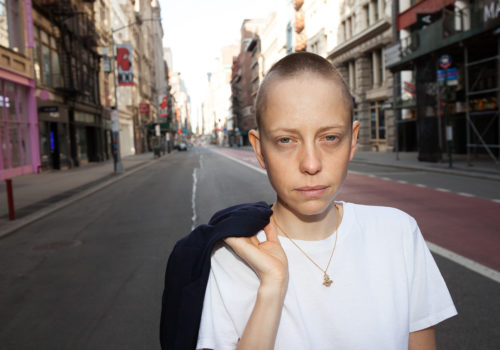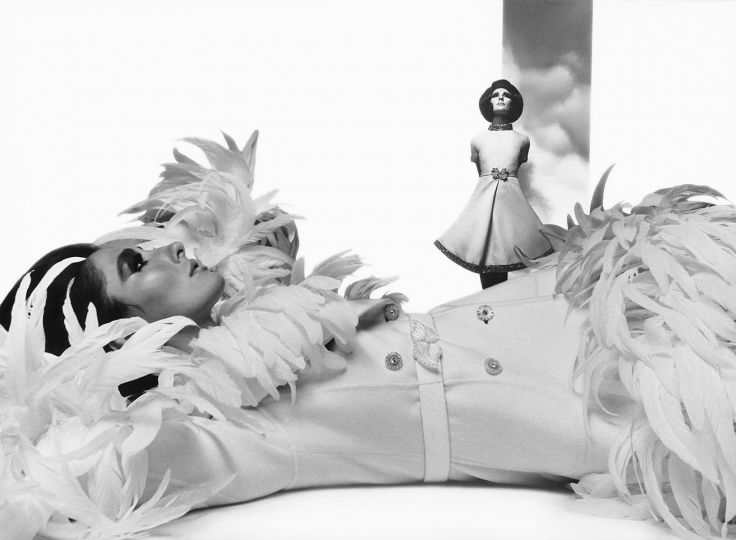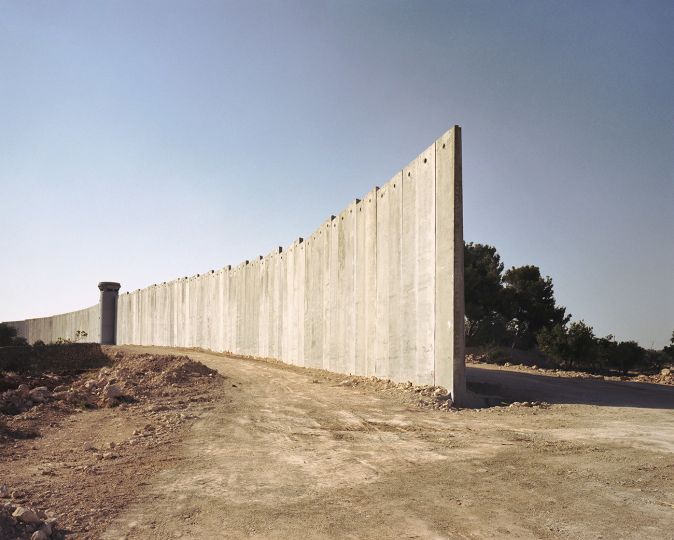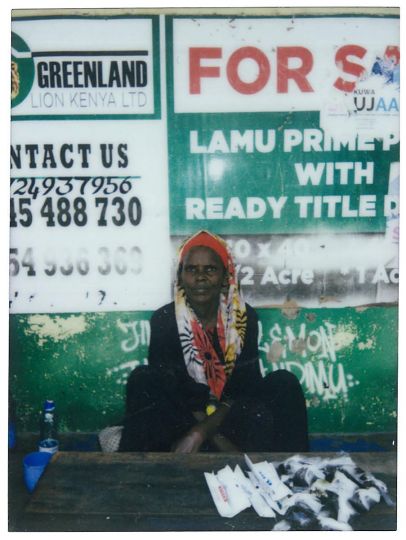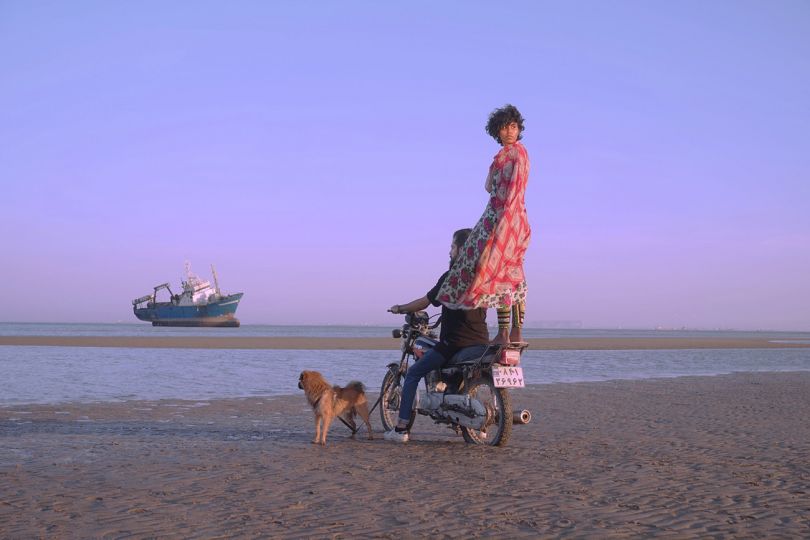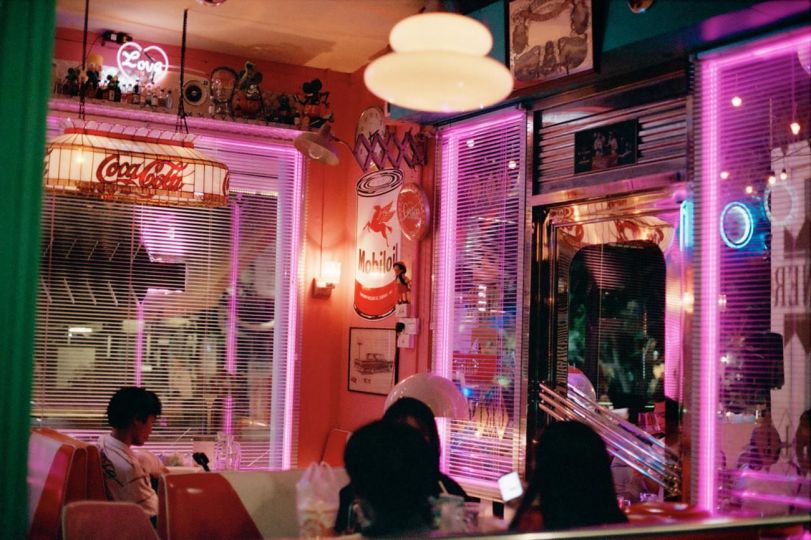Marie Tomanova is a true whirlwind and the latest discovery when it comes to contemporary female photographers. The Czech-born grew up in a South Moravian border town, Mikulov. After receiving a painting MFA (2010), she left to United States where she still lives and works. Turning to photography displacement, identity, gender, and memory became key themes in her work.
I met her at her exhibition during a press tour as part of EMOP BERLIN 2020 – her irrepressible energy, this unequal lust for life and appetite to conquer the photographic world stayed in my mind. When she recently told me about her upcoming exhibition in Arles and her new book “New York, New York”, we sat down and talked about her latest series “This Was Once my Universe” and what else is new in her life.
So far, Europe hasn’t seen too much of your radiant work – but we hope that with your second book, there will be more shows on view in the next months and years. What is the book about?
MT: The book is titled New York New York (Hatje Cantz 2021) and captures in over 145 photographs the vibrant portraits of a new generation of Americans in the throes of cultural transformation. It is a landscape of youth and a portrait of New York City. It is my second book – after Young American published in 2019 by Paradigm Publishing with an introduction by Ryan McGinley – and we will launch it at Arles on July 8th, then in August in Prague at Fotograf Gallery, and in late September in the United States at Dashwood Books.
Art historian Thomas Beachdel, who authored the book and shaped the project with me since its beginning, describes what the book is about quite beautifully:
“Marie Tomanova’s New York New York is a landscape of youth and a portrait of place – entwining person and environment. New York City is an almost mythic entity, a place of both coming to and becoming in.”
“New York New York is at once vast and specific, intimate and outgoing. It is about deep truth and superficial moments, the range of what it means to be human. It is honest and forthright – it is real. Tomanova’s images are direct and speak to the essence of an instant. They are about emotions and space, place, and identity.”
“Mostly shot during 2019 and 2020, the book deftly entwines portraiture and landscape to recontextualize and expand the meaning of each, presenting a powerful and vital panorama of identities of people and place, and a compelling future free of binary gender models and outmoded definitions of beauty.”
I really relate to the idea of NYC as a mythic place of coming to and becoming in. That is exactly what I did, and it is what most of the kids I meet and shoot are experiencing right now, too. And it is really special to hear those stories and to relate to that aspect of coming to and being yourself – discovering yourself, who you really are in NYC. In her foreword to the book, Kim Gordon writes about her experience coming to NYC, and it is so relatable. She mentions how she could be herself but also how it could be difficult feeling like you fit in. All these emotions. And her voice is so empowering – to see someone like Kim go through what I went through and what others who have come to NYC as part of their dreams also go through. It is so powerful to know we can become who we want to be. We can dream and become. New York City is a big city of dreams.
Jumping back to October 2020, you had a big solo show at the Czech Centre in Berlin, during the European Month of Photography (EMOP) Berlin 2020. I remember visiting you there with a group of journalists, and everyone loved your show Live For the Weather. Tell us, what has changed and happened since then?
MT: Well, so much has changed! The exhibition at Czech Centre Berlin was really special because I was able to show multiple bodies of work and link them all together. I was showing work that I photographed during my early 20s in the Czech Republic, long before I even thought of moving to NYC and pursuing photography as a medium. And those photographs were brought into tension with the latest work I shot in NYC and upon my first return home to the Czech Republic. It was a very complex exhibition taking over the entire big space of the gallery with a large-scale video projection as a centerpiece.
One of the great moments during the exhibition was meeting Nadine Barth, the editor from Hatje Cantz, and showing her the work. She loved it and we immediately clicked! At the time, I was looking for a publisher and her first question was: So how would you imagine this book would look like? I was so excited and that’s where the journey for the book New York New York began.
Now, let’s talk about your upcoming show, which will be on view during Rencontres d’Arles under the title It Was Once My Universe at Église des Precheurs. What is the show about?
MT: It Was Once My Universe (2018–ongoing) is a deeply personal photography project about my return home to the Czech Republic after 8 years of exile in the US due to immigration issues. During that time, I relived and idealized home in my head whenever things were difficult, so when I actually went back to my small family farm in the border town of Mikulov in the winter of 2018, I was unprepared for the deep confusion and conflicts that I was experiencing. I felt like I had become alien from my own home, and yet I still belonged – after all, it is home… but now so is America. This work is about that. It is about contradictory feelings and disorientation. It is about home, family, memory, distance, and time. The date stamp in the photos is important because it emphasizes a specific time, a moment, an instant. And yet there is something very off-kilter, just as I was in my return home: the camera is still set to a New York time zone. The images are not chronological, and so deceive in a subtle yet powerful way, like nostalgia, like memory, like a dream. They show the specificity of a moment, but also the flexibility of time and space.
When looking at some of the images taken by you back “at home,” and following you on Instagram, I feel that you entered a completely new world when moving to New York. Physically and psychologically. Would you say that this show marks a kind of closure with your old life?
MT: I think about it more in terms of how my world has expanded and grown. But the inner core is still very much “Czech” and relates to all the memories from my childhood. I am not trying to forget all of that but rather to nurture it and embrace who I am and where I come from. I don’t think I could live long term in my small town again, but it is certainly a nice challenge to be confronted with my past here and there, during my visits. I would also like to make a book out of those photographs – the very old ones that I shot in my early 20s – now gathered together as Live for the Weather – as well as the photographs I shot upon my first return back, It Was Once My Universe. It will be very interesting this summer when I go back home to Mikulov after Arles for a month-long residency. I plan on building on both of these projects that were shot in Mikulov over a decade apart, but I am not sure yet what that will look like. You are so right in identifying the sense of psychology, which for me is very important, especially with this Czech work and going back home. What will this return home look like this time, when I have an extended time to be there? I imagine it like my childhood summers, but will it really be that? I can’t wait to see. I am so excited. Without really ever focusing on it specifically, I have noticed that my work has taken on a bit of a longitudinal aspect. This can easily be seen with the Czech bodies of work mentioned above, where the same people and places occur in photographs a decade apart. I also see it happening in NYC, for example with Kate and Odie, especially, or others I have been photographing for years. So in that sense, the idea of closure isn’t as accurate as perhaps continuance, or transformation.
In order to put this series together, how did you operate, meaning, how did you go through all the images and moreover, how did you feel about it?
MT: It was an emotional process. I was quite overwhelmed the whole two-and-a-half weeks that I spent at home over Christmas in 2018. It was a lot of family time that I had longed for, my mom also got married (they waited for me to be home for that), and then Christmas holidays with all the traditions and food that so strongly represent home for me. It was precious to see the most ordinary things through my own eyes and capture them forever on the film. Like watching the sunset light on the two chairs that my mom and stepdad always sit on, while I heard their voices talking in the kitchen. Watching the sunset over our garden, walking through the gate to our estate after seeing my friends in local bar as I always used to. It was magical and scary. Seeing the exact same people sitting on the exact same chair in the bar as it was 10 years ago. Walking the streets of the town that looks the same as before. It was calming and distressing at the same time. I fell in love with the fast paced and always changing life in NYC where nothing is the same for very long. You meet new people almost every day. You see new things all the time. So when I was editing the photographs a few weeks after being back in NYC, it was quite emotional in retrospective way. Because the two places that I consider myself belonging to couldn’t be more different. In a very real way, I was a bit traumatized, and had such conflicting feelings. And that is what the images in It Was Once My Universe really were for me at the time, and still are. But they have taken on another cast the longer I have been away from Czech and I noticed that at the exhibition in Berlin: my feelings invoked by the images, seeing them on the wall, began to shift towards longing for home, nostalgia, and tenderness. An image that I actually didn’t put in that Berlin show, of my mother’s and stepfather’s chairs at home where they always sit, became like a beacon for me, a beacon of family and love.
You once told the press that you ended up in New York by accident. Please share this story with our readers as well…
MT: Well, I think my whole departure to the US was kind of a nice accident. I wasn’t sure what to do with my life after I finished my master’s degree in painting in the Czech Republic, and I felt very discouraged as a female artist trying to navigate the very male-dominated art scene there. My experience at school was actually so bad that I gave up on painting and decided to go to the US as an au pair. Here comes what you might be also referring to – I accidentally ended up in North Carolina. My understanding of size and distance was strongly linked to the size of my home country, and I had no idea how vast and enormous the whole US is, so I didn’t think that the south of the US would be so different from the north of the US, for example.
But I actually had a wonderful year in North Carolina, focusing a lot on writing journals and trying to make sense of the culture shock that followed me for quite few years. I loved the adventures of constantly seeing new places, new people, new things. Even a trip to the grocery store was a big excitement, as I never knew how anything in the packages would taste like. My whole reality expanded from a small town with the exact same routine all the time to an unpredictable, socially and culturally diverse and constantly changing environment. I was perplexed and mesmerized. I felt alive.
And I repeated the same process of jumping into the big unknown after my first year in North Carolina, when I moved to NYC. I didn’t know a single person in New York, and nobody knew me. It was total freedom. NYC has a liberating power, giving you space even though it sometimes seems like people are stacked up on top of each other. But there is mental space to be whoever you want to be. NYC offers the freedom to become.
And that’s why I admire this city so much.
Do you feel that due to your new life in New York, you have grown into another person? Also, which photographers in the city inspired you most?
MT: I have grown enormously – but mainly through the wonderful support of the amazing people around me. I do have to mention Thomas Beachdel again, who ignited the spark for me to even start photography. Even though I had been shooting so much in my 20s in Milulov, I didn’t realize it was even photography since it was on a small digital camera or even a cell phone. He took me to see the Francesca Woodman show at the Guggenheim in 2012 (my second week in NYC) and I fell in love with photography. It was actually her journals that they were also showing that caught my attention. I related to those so much since I spent a year in North Carolina just writing. I thought to myself: Why didn’t I ever try photography? So, I signed up for classes at the School of Visual Arts and started to take pictures. First it was a means of being creative for myself, then my passion for taking pictures grew as I discussed and critiqued the photographs with Thomas, and then it became a long-term practice and relationship. He has curated many of my exhibitions and we worked together closely on both books. Thomas helped me shape the Young American project for my first solo show in 2018 at the Czech Center New York. Together, we have done over 14 international exhibitions in the past 3 years, EMOP in Berlin being the latest one. So I really owe a lot to his guidance and believing in me before anybody else did. It is those special encounters in life that can set it in a whole different direction and help you fully come into yourself.
I also have to mention photographer Ryan McGinley, who has been wonderfully supportive, and who wrote the introduction for the Young American (Paradigm Publishing, 2019) book. Ryan came to see the Young American exhibition and we sat together for hours looking at and discussing my work. It was amazing. I was a girl from a small town in the former Eastern bloc, sitting and discussing my work with one of my heroes. And this is after I got no support for being a female artist in Czech. I felt like I actually mattered and my work mattered. I cannot describe how important this was to me, to be able to see myself as empowered. And this is an important thing for me with my work, to take pictures that are real and unglossed, which communicate that it’s ok to be oneself.
What’s next for you?
MT: The book is my biggest and dearest project, as well as the exhibition at Rencontres d’Arles. After that I will be spending a month in my hometown as I am invited to take part at the Dilna Annual Art Residency, which will give me an opportunity to work on a new body of work there, which I mentioned before. Then we will be launching the book in Prague in August and at Dashwood Books in New York in September.
Also, I am very excited to announce that I just joined the roster of artists at C24 gallery in Chelsea by whom I am now represented. I had the pleasure to work with the director, David C. Terry, on multiple projects and the whole team at C24 feels like a family.
I will be opening a solo exhibition at their space in Chelsea on October 7. I am super excited about that, as I haven’t had a show in NYC since 2018. So very exciting, big projects.
When comparing your former life with your career now, what advice would you give to others who are thinking of leaving home and moving to a big foreign city?
MT: For things to happen, you have to make the first step. Even if it seems scary or crazy, don’t hesitate, don’t give up, and don’t let other people discourage you. Things are never easy at the beginning but with passion, dedication, and persistence – you can reach anything you want.
Make sure to follow Marie on Instagram at @marietomanova and to check out her website at: https://marietomanova.com/
About the exhibition:
It Was Once My Universe
4 JULY – 29 AUGUST 2021 at ÉGLISE DES FRÈRES PRÊCHEURS in Arles
Curated by Sonia Voss as a part of the Louis Roederer Discovery Award

